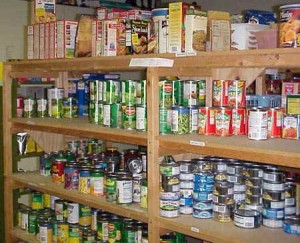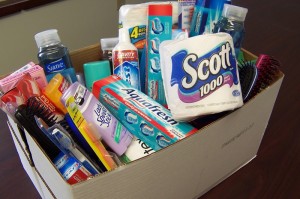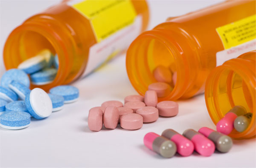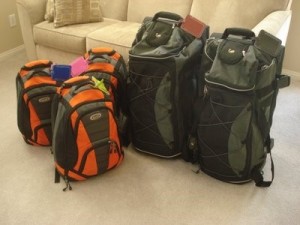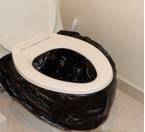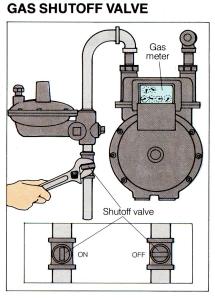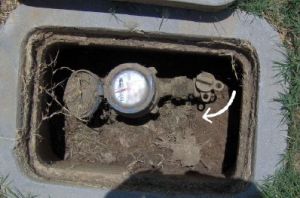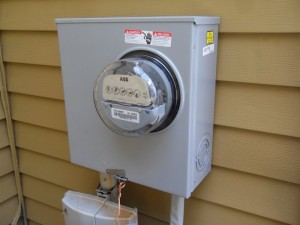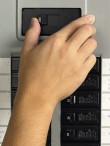Click here for a printable version of this page
Having 14 gallons of safe, clean water per person is the foundation for emergency preparation. This provides a life-sustaining two-week supply of water should the municipal supply be interrupted by disaster.
Number of people in household x 14 = Number of gallons to be stored
Options for storing water:
- A simple solution: Commercially bottled water in 1 gallon PETE 1 plastic containers (not HDPE 2 like those used as containers for milk)
- Both the International Bottle Water Association and the U.S. Food and Drug Administration (FDA) consider commercially bottled water to have an indefinite shelf life as long as it is properly stored (room temperature, away from light and chemicals) and remains unopened.
- Gallon jugs of water usually come packaged in heavy cardboard boxes which are opened by the grocer before the water is placed on the shelf. By asking to purchase the water in the boxes you can stack water for more compact storage. (Follow directions on box for how high the boxes may be stacked.)
- Gallon jugs or boxes of jugs fit easily across the back of closets under hung clothing.
- Gallon jugs are easy to lift and use when needed. This size bottle will be used more quickly, an advantage when refrigeration is not available.
2. Do it yourself water storage.
- Containers: Hard plastic containers in which you may store 5, 15, 30 or 55 gallons of water are sold at camping and preparedness stores. (See Emergency Preparedness Resources page.)
- Second hand containers: Use only food-grade containers. Empty soda or juice containers with lids work well. (Do not use milk containers or those previously used to store toxic substances.)
The Center for Disease Control gives the following directions:
- Preparing the containers:
Thoroughly clean the bottles with dishwashing soap and water, and rinse completely so there is no soap residue. Sanitize the bottles by adding a solution of 1 teaspoon of plain household chlorine bleach to a quart of water. Swish the sanitizing solution in the bottle so that it touches all surfaces. After sanitizing the bottle, thoroughly rinse out the sanitizing solution with water. - Filling containers: Fill the bottle to the top with regular tap water. If the water is from a municipal source you do not need to add anything else to the water. Tightly close the container using the original cap. Be careful not to contaminate the cap by touching the inside of it with your finger.
- Rotating water: Replace the water every six months if not using commercially bottled water.
3. Storing water safely
- Store water away from light and heat. These promote bacteria and algae growth.
- Keep water away from stored gasoline, kerosene, pesticides, etc.
- Water stores best at room temperature — not in the garage
- If you have freezer space, storing some water in the freezer will provide ice to keep foods cold in the event of power loss. (Water expands when freezing. Leave space at the top of the container.)
WATER DURING AN EMERGENCY
In an emergency if you hear reports of broken water or sewage lines, shut the water off at your incoming water valve to prevent contaminated water from entering your home.
Take care to keep your stored water clean as you use it:
- Containers should be closed when not in use.
- Clean pumps carefully before installing them in large containers to pump out stored water.
- Do not drink from containers, even individual serving bottles, if you will not finish the bottle that day. Bacteria introduced as you drink will multiply over time. Pour water into a cup to drink.
To improve the flavor of stored water pour it back and forth between two clean containers to add air.
Ways to make outdoor water safer
Before drinking, cooking with or bathing in outdoor water it must be treated. Untreated water can make you very sick. The Red Cross gives the following directions:
- Strain it: Pour water through paper towels, clean cloth or a coffee filter to remove suspended materials.
- Boiling it: Bring water to a rolling boil for 1 full minute. Cool it and pour back and forth between two clean containers to improve its taste before drinking it
- Chlorinating it: Using household liquid bleach that contains 5.25-6.0 percent sodium hypochlorite as its only active ingredient (see label), add 15 drops (1/8 teaspoon) per gallon to water in a large pot. Stir and let stand for 30 minutes. If the water does not have a slight bleach odor, repeat the dosage and let stand another 15 minutes. If it still does not smell of chlorine, find another source of water and start over.
- Distilling it: Fill a pot halfway with water. Tie a cup to the handle on pot’s lid so that the cup will hang right-side-up inside the pot when the lid is upside down without dangling into the water. Boil the water for 20 minutes. The water that drips from the lid into the cup is distilled.
You should not drink flood water. Avoid water with floating material, an odor or dark color.
Water Sources
You can use water in your pipes, hot-water tank, ice cube trays and as a last resort, water in the reservoir tank of your toilets (not the bowl).
- Pipes: After shutting off your incoming water valve let air into the plumbing by turning on the faucet in your house at the highest level. A small amount of water will trickle out. Then obtain water from the lowest faucet in the house.
- Hot water heater: Turn off the supply valve to the tank to prevent contamination. Turn off the gas (on the line, not just the pilot light) or unplug electric heaters. Let the water in the heater cool so that you will not be burned as you remove the hot water. Turn on a hot water faucet nearby (this will open the airlock created by turning off the water intake). Place a bucket under the drain valve and drain a gallon or two until water flows clear (no rust flakes, etc). When clear water flows, switch to a clean, sanitized container. (Attaching a cleaned short hose like that used on a washing machine will make collecting water much easier.) Treat water from a water heater with 8 drops household bleach per gallon before drinking. Refill the tank before turning the gas or electricity back on. If the gas is turned off, only a professional can turn it back on. (For directions with photographs see: http://www.wikihow.com/Get-Emergency-Drinking-Water-from-a-Water-Heater)
Swimming pool water: If you maintain the standard chlorine levels for domestic swimming pools (about 3 to 5 parts per million) in times of safety, then your pool water will be ready for use in an emergency with minimal treatment.
- Maintained pool water is suitable for laundry and bathing without further treatment.
- For drinking, boil pool water for three to five minutes to kill off any germs the chlorine hasn’t. If your pool has a low level of chlorine, add 5 to 7 drops per gallon of chlorine-based bleach after boiling and stir well.
- Filtering pool water in a domestic jug-style filter can remove some of the harsh taste of chlorine and foreign bodies such as leaves and pool grit. However, a filter is no substitute for boiling and chlorination when it comes to killing bacteria and harmful microbes.

